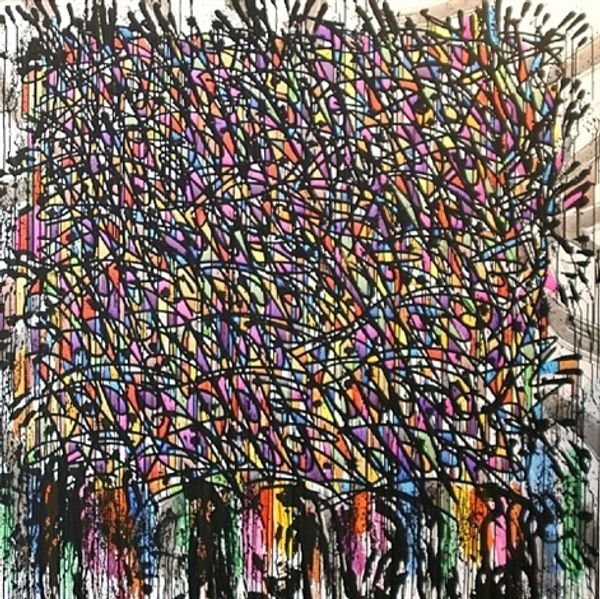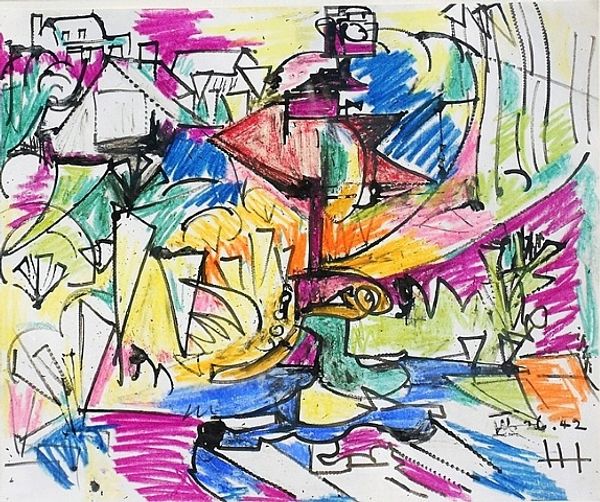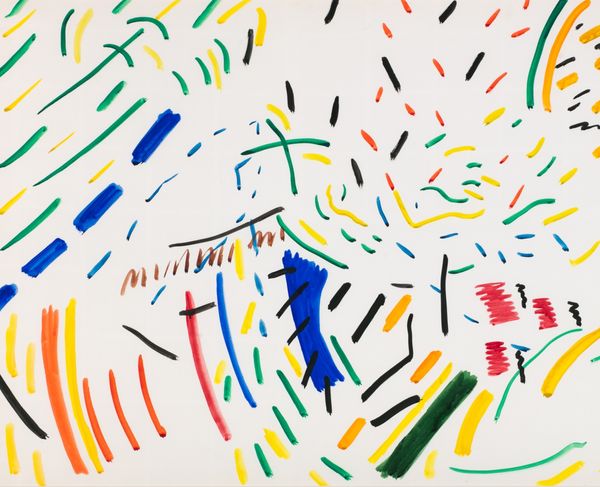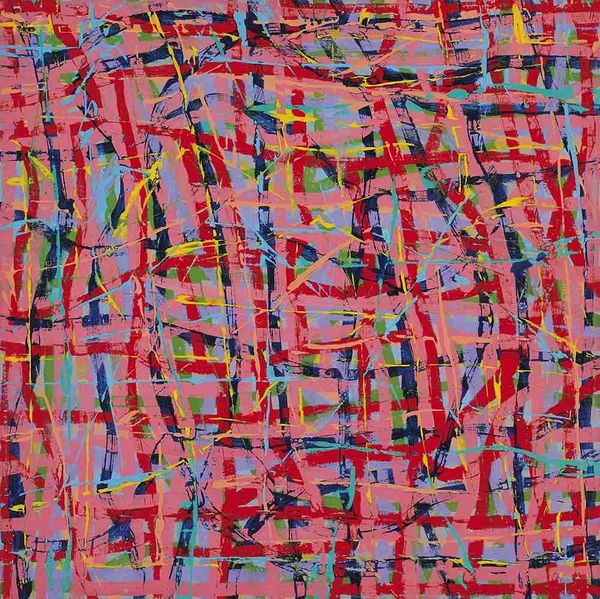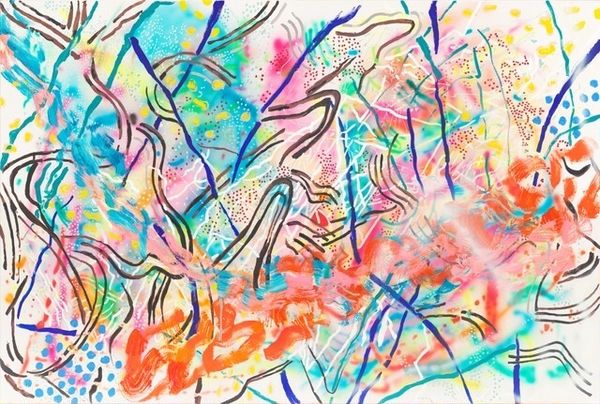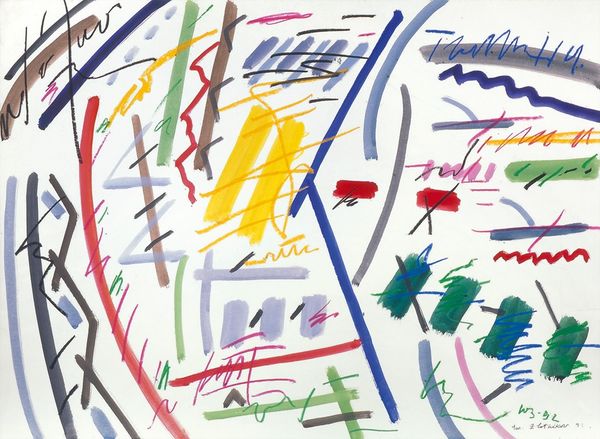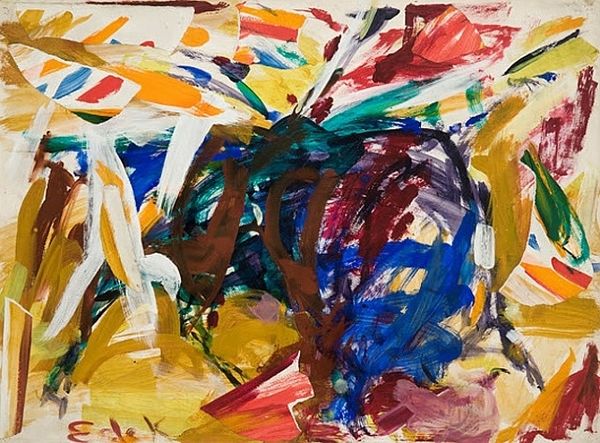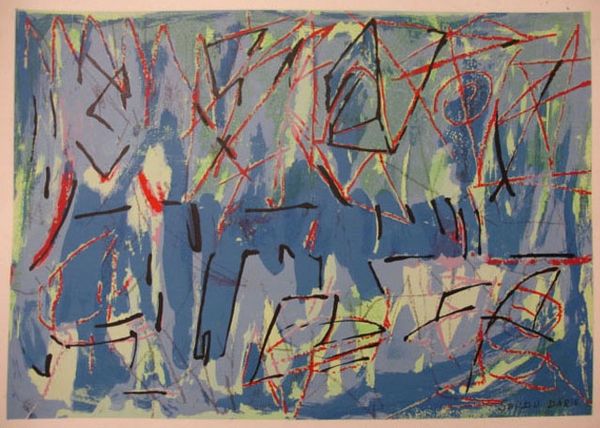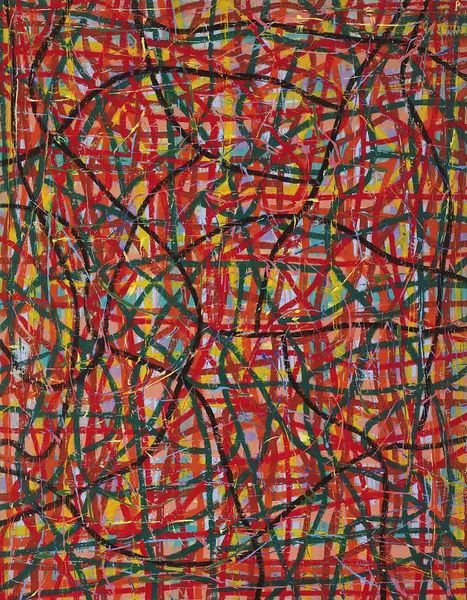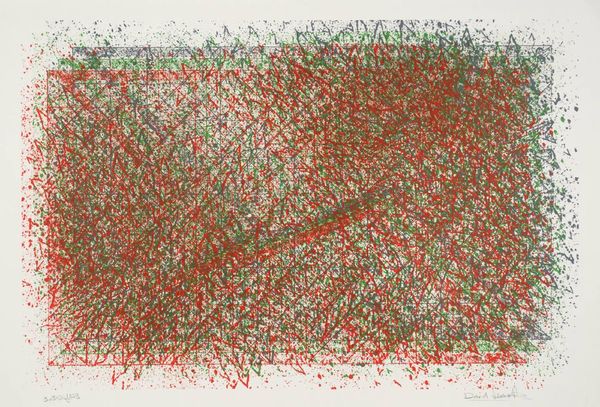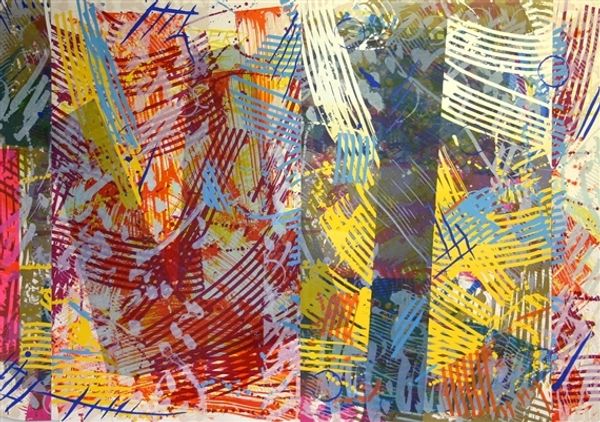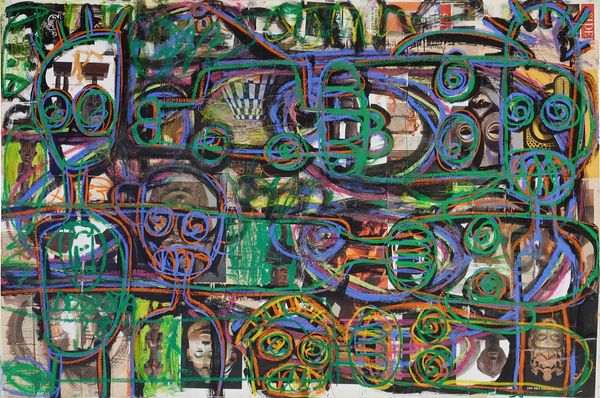
#
washington-colour-school
Copyright: Sam Gilliam,Fair Use
Editor: Here we have Sam Gilliam’s "Coffee Thyme," created in 1980, using graphite and textile. The overall impression I get is one of controlled chaos. The lines are energetic but seem contained. How do you interpret this work? Curator: From a materialist perspective, it's fascinating to consider the context of Gilliam’s choices here. The work’s materiality becomes paramount. The layering of graphite and what you identify as textile pushes against traditional drawing boundaries. Editor: Interesting. The frenetic energy from the line work doesn’t strike you first? Curator: That energy comes directly from the process. Think about the physical act of applying those lines – the artist's labor, the speed, the pressure. Are we truly looking at abstraction, or a visual record of repetitive, almost ritualistic mark-making? Moreover, Gilliam frequently challenged distinctions between painting and sculpture; this work also seems to defy conventional medium labels. Where does "drawing" end, and something else begin? Editor: I see what you mean. It’s almost like the piece is performing its own creation, drawing attention to the means by which it was made. Curator: Precisely! We might even consider the socio-economic factors at play. Graphite, a common material, transformed through intense labor into something… more. It questions the value we place on both materials and artistic creation. What does it mean to elevate the "lowly" graphite to the level of "art"? Editor: This makes me think differently about abstraction, actually! The focus on material shifts my attention from pure aesthetics to the conditions of its production. Curator: Exactly. Analyzing the material realities embedded within "Coffee Thyme" adds layers of meaning that a purely formal reading might miss. Editor: Well, this was illuminating; thank you. I definitely gained a deeper appreciation for analyzing artwork through a material lens.
Comments
No comments
Be the first to comment and join the conversation on the ultimate creative platform.
